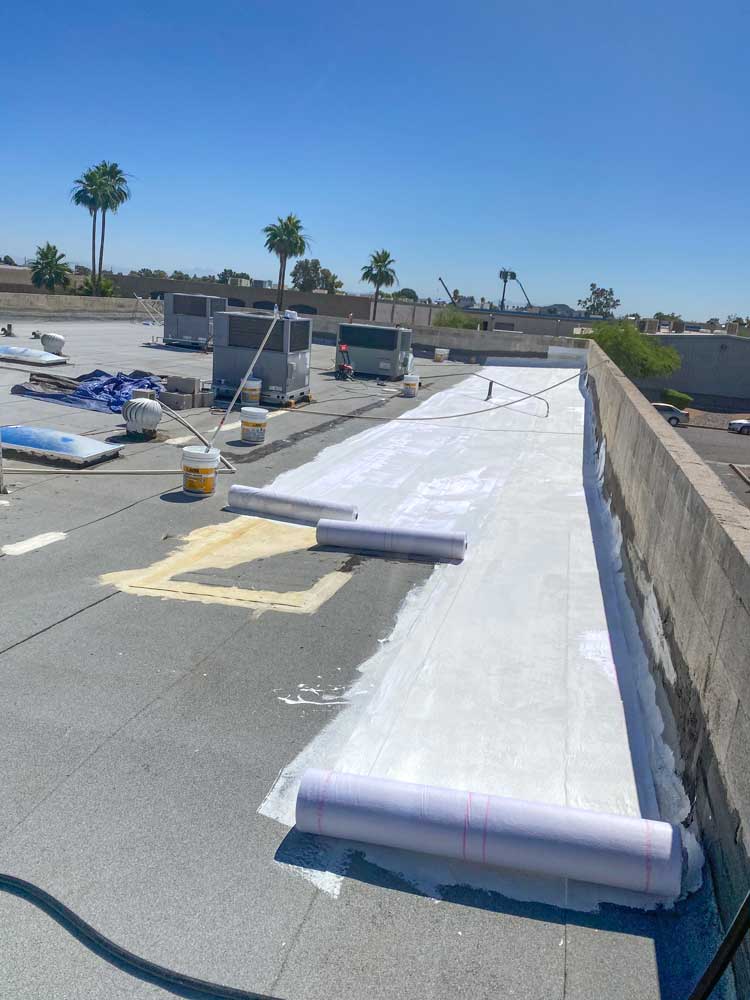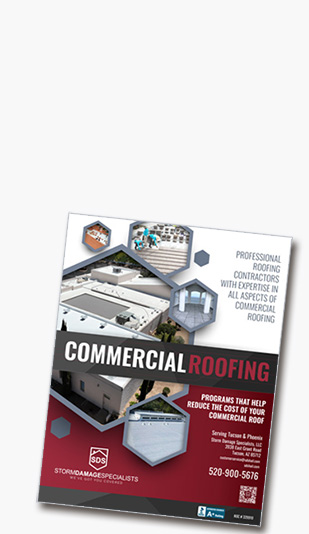Built-up roofing (BUR) systems have been a staple of commercial buildings since their debut in the mid-1800s. As the roofing industry progresses, BURs (originally called Tar and Gravel Roofs) still have a place in the market. At Storm Damage Specialists, we have experience and expertise installing Arizona roofs including Built-Up Flat Roof (BUR) systems. We only use the highest quality roofing materials and we will guide you to find the right options for your building. Let’s take a look at the benefits that BUR systems have to offer.
In this article:
What Is a Built-Up Roofing System?
What is a Built-Up Roofing System Made From?
What Types of Built-Up Roofing Systems Are Available?
What are the advantages and disadvantages of built-up roofing in Arizona?
What are the disadvantages of Built-Up Roofing Systems?
How do I choose a good roofer for my Built-Up Roof?
Why Should I Choose SDS Roofing?
What Is a Built-Up Roofing System?
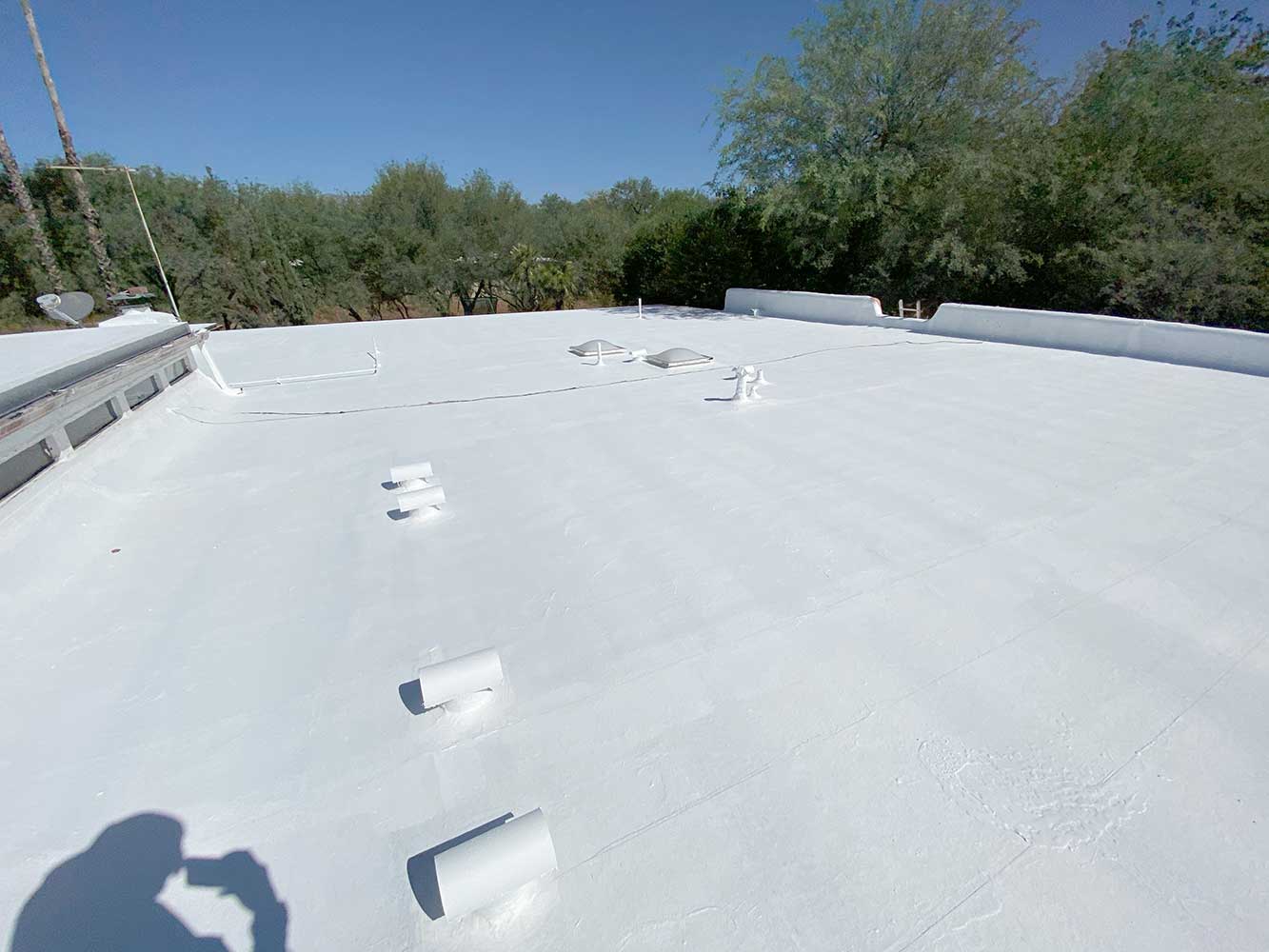 A built-up roofing system, or BUR, is composed of 3-5 layers of materials, primarily bitumen (type of asphalt or coal tar) and ply sheets that have been laminated together. It is usually flat or low-sloped in design and is commonly used in commercial and industrial settings.
A built-up roofing system, or BUR, is composed of 3-5 layers of materials, primarily bitumen (type of asphalt or coal tar) and ply sheets that have been laminated together. It is usually flat or low-sloped in design and is commonly used in commercial and industrial settings.
This roofing system is built up layer by layer, with each additional layer of material adding strength, tear resistance, and durability. It is this layering process that provides insulation and makes it an ideal choice for buildings located in areas with extreme weather conditions like Arizona or buildings with high foot traffic.
What is a Built-Up Roofing System Made From?
There are 5 major roofing materials that make up a BUR system:
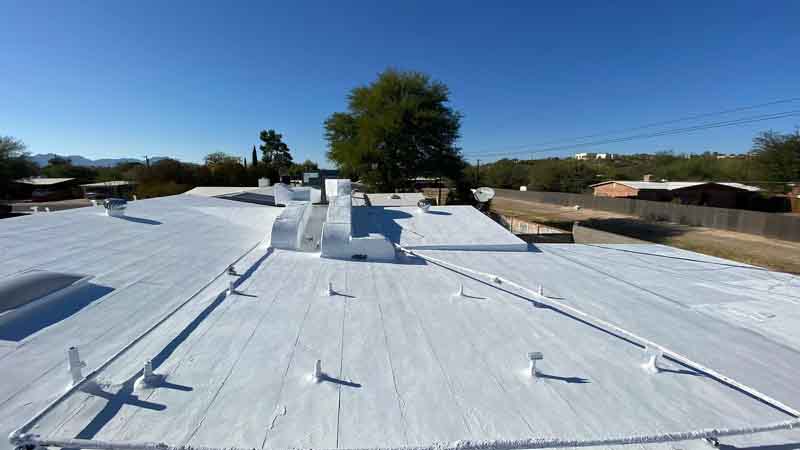
- The Decking: provides a base for the other roofing materials of the roofing system. It is usually made of steel, concrete, lightweight concrete, or wood.
- Insulation: placed on top of the decking to provide thermal protection and reduce energy costs. There are various types of insulation materials, including rigid foam board, fiberglass, and mineral wool.
- Ply/glass Sheets: also called felts, are the first layer of the built-up roofing system. They are nailed or adhered to the insulation or decking. Ply/glass sheets are made out of either organic or synthetic roofing materials.
- Bitumen: also known as asphalt or coal tar, the primary waterproofing material of the built-up roofing system. It is either mopped or sprayed onto the ply sheets in two to four layers. Each additional layer of bitumen is reinforced by embedding a layer of ply sheets.
- Surfacing: located on top of the bitumen, provides UV protection and weather resistance. It can be made up of gravel, mineral granules, or a coating of aluminum, acrylic or silicone
What Types of Built-Up Roofing Systems Are Available?
There are two types of built-up roofing systems: the hot-applied system and the cold-applied system. The hot-applied system involves heating the bitumen to a liquid state and then applying it to the roof in the appropriate number of layers. The system is time-consuming and typically has a higher labor cost but results in a more durable and longer-lasting roof. The cold-applied system is a simplified version of the hot-applied system. It involves using modified bitumen adhered to the roof using adhesive or self-adhesive roofing material. This method is faster and more cost-effective but may not last as long as a hot-applied system.
What are the advantages and disadvantages of built-up roofing in Arizona?
Built-Up Roofing (BUR) Systems offer several advantages over other roofing options, especially in the Arizona climate.
-
Longevity – How long does built-up roofing last?
The multi-layered materials construction of BUR systems provides increased durability and resistance to foot traffic, weathering, and punctures. This makes it an excellent choice for high-traffic areas or buildings located in areas that are exposed to extreme weather conditions. BUR roofs typically last about 20 to 30 years. Conducting regular inspections and maintenance will ensure the maximum lifespan of a built-up flat roof. Protecting the membrane with a coating can lead to roof life spans of upwards of 50 years.
-
Low-Maintenance – What Goes Into Maintaining A Built-Up Roof?
Though built-up roofs require very little maintenance, regular upkeep of your built-up roof is essential for keeping it in top condition. To prevent any issues from getting out of control, conduct an annual inspection and re-coat the surface every 4–6 years. With proper care, you can keep this reliable form of protection protecting your building well into the future!
Maintaining proper coating on your built-up roofing is an essential part of routine maintenance and repair. Coating serves to protect from solar damage, which is especially important in a state like Arizona. If left uncared for, a built-up roof can rapidly deteriorate leading to far more costly repairs in the future. Ensuring efficient sun protection with proper coating will go a long way in saving time and money! Ask us about our low-cost maintenance plans!
-
Energy Efficiency – How do BUR materials regulate building temperature?
The insulation layer in BUR systems can significantly reduce heat loss in the winter and reduce the amount of heat entering the building in the summer, leading to lower energy costs. In a hot, dry state like Arizona, the focus is on using roofing material that will keep the building cool in the face of blazing solar rays. For a BUR system, materials like white-coated cap sheets are available to help reflect the sun’s rays away from the building. This can help lower internal temperatures and save overall energy costs. Quality coatings that are properly installed on a Built-Up Roof can reduce the surface temperature of the roof by 60-100 degrees in the summer. Additionally, when installing we can add layers of iso board (insulation). This can increase the r value of your roofing/attic insulation by as much as you want!
-
Lower Price – What is the cheapest flat roof?
When considering roof replacement, one must weigh both functional and aesthetic aspects. A typical BUR system can cost anywhere between $5.50 to $14.50 per square foot for installation. Built-up roofs can vary based on the amount of material, labor, and equipment used in the individual commercial roofing system. With many commercial roof systems, there are a variety of installation options to choose from based on your location, building type, and budget, and SDS Roofers will help you find the option that is best for you.
-
Fire Rating – What roofing material is fire-resistant?
Built-up roofing is an excellent choice for fire resistance, as it combines bitumen with a top layer of aggregate. With regular inspections and maintenance to ensure everything remains in order, this type of roof provides reliable protection against the threat of flames. We can add an extra base layer, specifically rated to hold fires from burning through the roof, on any structure if wanted. This entire system makes the roof all but fireproof.
What are the disadvantages of Built-Up Roofing Systems?
As with anything else, Built-Up Roofs come with their disadvantages. The main challenges of a built-up roof structure are weight and installation time. Built-up roofing systems can be heavy, especially if gravel surfacing is used. This could pose a structural problem for buildings not designed to handle such surfaces. The installation of built-up roofing systems is a time-consuming process because of the multiple layers of roofing materials required. This can result in a longer install time compared to other roofing systems. We have found the advantages of a built-up roof far outweigh the disadvantages.
How do I choose a good roofer for my Built-Up Roof?
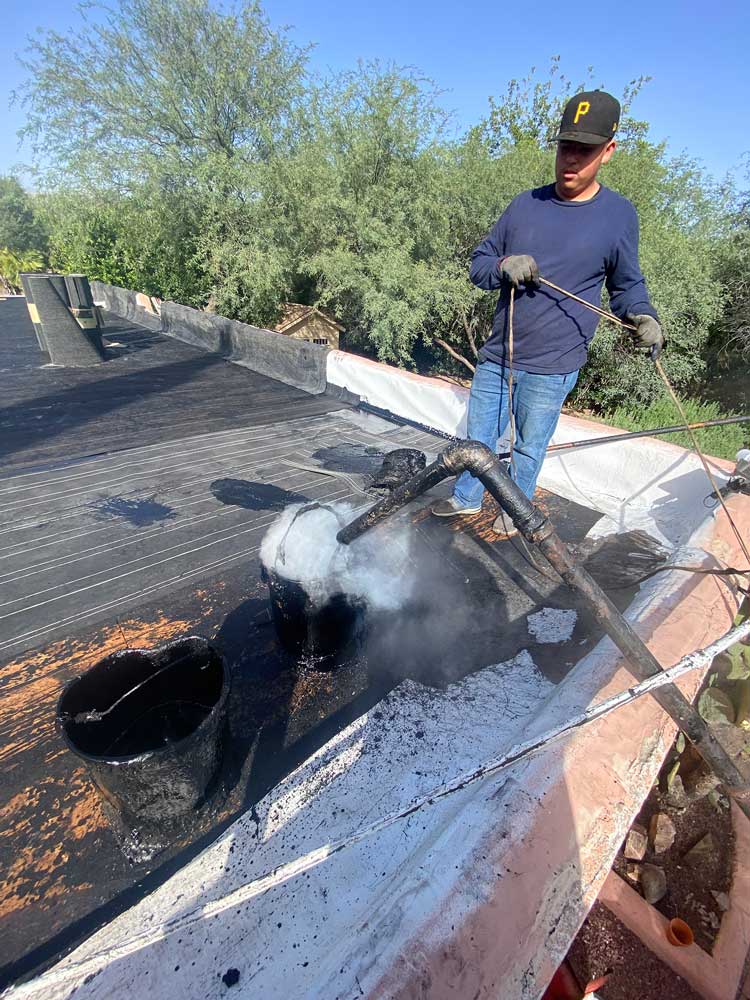 Businesses in Arizona need contractors who understand the unique challenges presented by our climate. SDS is proud to offer roof repair and installation services with superior craftsmanship, utilizing only the best roofing materials available for flat roofs. We are well-equipped to handle all your commercial roofing needs during blistering summers, heavy rains of monsoon season, and even unexpected hailstorms that may occur over winter months.
Businesses in Arizona need contractors who understand the unique challenges presented by our climate. SDS is proud to offer roof repair and installation services with superior craftsmanship, utilizing only the best roofing materials available for flat roofs. We are well-equipped to handle all your commercial roofing needs during blistering summers, heavy rains of monsoon season, and even unexpected hailstorms that may occur over winter months.
Before a new install, look for a roofer that knows the ins and outs of built-up roofs and looks beyond the price tag to find the options that will be best for you in the long term. When evaluating built-up roof systems, contractors should look at features such as number of plies, safety and fall protection setup, base sheet weight, fastener spacing, etc. all should be examined. These can make a significant difference in pricing proposals. Proper sealing is a must: all penetrations have to be three coursed with webbing and coating before installation completion. At SDS roofers, we don’t expect you to be experts in roofing. We will bring our expertise and leave you with a roof you can count on.
Why Should I Choose SDS Roofing?
With years of expertise and a customer-focused approach, our services stand out from the competition. Our team is made up of industry professionals with experience in Built-Up Roofs and other roofing options, giving you peace of mind that every problem can be addressed effectively and efficiently. Storm Damage Specialists offer an experienced team of roofing installers for impressive, high-quality commercial roofs. No project is too big or small—from 500 square foot single flat tops to 250,000 square foot multi-unit condos, we handle it all!
Conclusion
There is a reason that built-up roofing systems have stood the test of time as a favorite of experienced roofers. BUR roofing is a great choice for commercial property owners, offering many advantages over other roofing options. By reflecting UV and sunlight with the correct coating, it can keep buildings cool in hot climates like Arizona. Its layers of construction create an extremely durable system while protective coatings help to prevent water intrusion from rain or snow.
While the installation process can be time-consuming, the longevity and energy efficiency provided by these systems make them a cost-effective option for any commercial building in need of a new roof. As long as proper precautions and fire-resistant roofing materials are used during installation and maintenance, BUR systems remain a reliable and effective solution for commercial roofing needs. With its versatility across building designs and layouts plus long-term effectiveness even with regular maintenance conducted over time; this option should certainly be considered when making decisions about your business’s next roof installation project.

